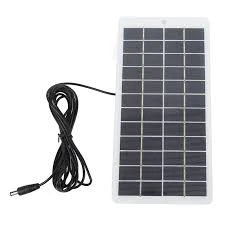bifacial vs monofacial
Bifacial vs. Monofacial Solar Panels A Comprehensive Comparison
As the demand for renewable energy sources continues to rise, solar energy has emerged as a leading solution. Within the solar technology landscape, two predominant types of solar panels have gained attention bifacial and monofacial panels. Understanding the differences between these two technologies is essential for making informed decisions regarding solar investments.
Monofacial Solar Panels
Monofacial solar panels are the traditional solar panels that are commonly used in residential and commercial installations. These panels have a single layer of photovoltaic cells that capture sunlight from one side. They are typically installed facing south (in the Northern Hemisphere) to maximize exposure to sunlight. One of the main advantages of monofacial panels is their widespread adoption, leading to established production processes and lower costs. However, they only generate electricity from direct sunlight, meaning their efficiency can be limited in certain conditions.
Bifacial Solar Panels
In contrast, bifacial solar panels feature photovoltaic cells on both sides of the panel, allowing them to capture sunlight from both the front and back. This design can increase energy production, especially when installed over reflective surfaces such as white gravel, sand, or snow. Bifacial panels can harness reflected sunlight, known as albedo, potentially leading to a higher overall energy yield compared to their monofacial counterparts. This enhanced efficiency makes bifacial panels particularly appealing for utility-scale projects where maximizing output is a primary goal.
bifacial vs monofacial

Economic Considerations
When considering the economic aspect, bifacial panels generally have a higher upfront cost compared to monofacial panels due to their more complex design and manufacturing process. However, the increased energy production can lead to a quicker return on investment over the lifespan of the system. Additionally, as technology continues to advance and production scales increase, the price difference between bifacial and monofacial panels may diminish, making bifacial options more accessible.
Installation Factors
The installation environment significantly impacts the performance of both panel types. Bifacial panels require careful placement and potentially more sophisticated mounting systems to capitalize on their dual-sided energy capture. In contrast, monofacial panels can be simpler to install, as they only need to be orientated toward sunlight. However, the decision on which panel type to use should take into account the specific site conditions and intended application.
Conclusion
In summary, both bifacial and monofacial solar panels have unique advantages and disadvantages. Monofacial panels benefit from established technology and lower initial costs, while bifacial panels offer the potential for higher energy yields in the right conditions. When choosing between the two, it is essential to consider factors such as budget, installation environment, and long-term energy needs. Ultimately, the right choice will help maximize the benefits of solar energy for years to come.
-
Unlocking Energy Freedom with the Off Grid Solar InverterNewsJun.06,2025
-
Unlock More Solar Power with a High-Efficiency Bifacial Solar PanelNewsJun.06,2025
-
Power Your Future with High-Efficiency Monocrystalline Solar PanelsNewsJun.06,2025
-
Next-Gen Solar Power Starts with Micro Solar InvertersNewsJun.06,2025
-
Harnessing Peak Efficiency with the On Grid Solar InverterNewsJun.06,2025
-
Discover Unmatched Efficiency with the Latest String Solar InverterNewsJun.06,2025







